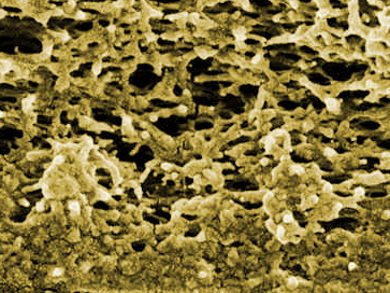The environmental regulations for automotive fuels are becoming ever stricter. Therefore, the production of low-sulfur fuels is important. Gasoline produced by fluid catalytic cracking (a conversion process in petroleum refineries) contains large amounts of sulfur contaminants, which makes desulfurization a key production step.
The widely used hydrodesulfurization process uses hydrogenation to remove the sulfur. However, this requires large amounts of hydrogen and reduces the gasoline’s octane number (a measure for the fuel’s performance). Pervaporation, in contrast, is a membrane technology to clean liquid mixtures. The membranes used in this approach allow a faster diffusion of the impurities—in this case, sulfur components such as thiophene—than of other components. This is due to a high affinity of the membrane materials for sulfur compounds.
Yingfei Hou and colleagues, China University of Petroleum (East China), Qingdao, have synthesized a polyvinyl butyral (PVB) pervaporation membrane that was modified with SiO2 nanoparticles. The SiO2 nanoparticles were homogeneously dispersed in PVB by mixing them with the polymer prior to casting the membranes. 3-(Methacryloyl-oxy)propyltrimethoxysilane was used as a coupling agent to covalently link the SiO2 particles and the PVB polymer. This avoids the generation of defects in the membrane and improves its selectivity.
The developed composite membranes (active layer pictured) have a good performance for the removal of organosulfur compounds from gasoline. This is due to several factors: PVB has a well-suited solubility for thiophene species. The SiO2 particles reduce the layer thickness and increase the pore size, which improves the membrane’s performance. SiO2 itself also has high adsorption capacity in desulfurization. The larger free volume of the mixed membrane, compared with a pure PVB membrane, improves the flux of gasoline. According to the researchers, their work provides useful information for the future development of membrane technologies for sulfur removal.
- Polyvinyl Butyral/Modified SiO2 Nanoparticle Membrane for Gasoline Desulfurization by Pervaporation,
Yingfei Hou, Yang Xu, Haiping Li, Yiyu Li, Qingshan Jason Niu,
Chem. Eng. Technol. 2019, 42, 65–72.
https://doi.org/10.1002/ceat.201800327




